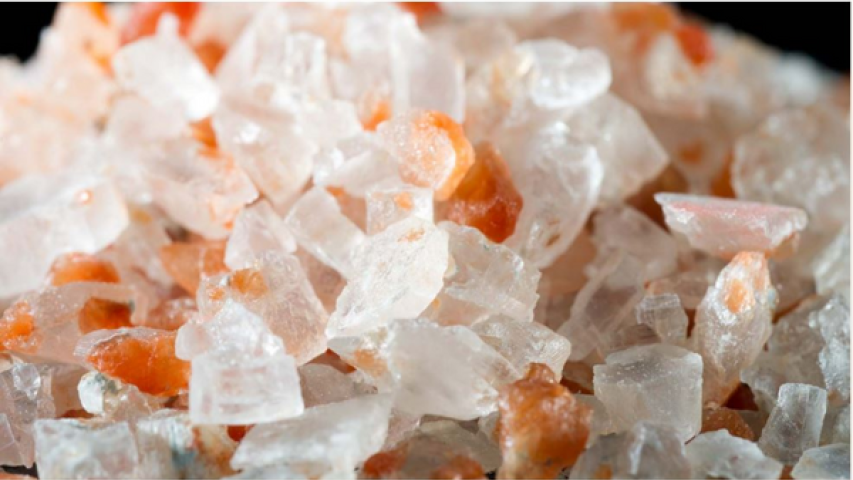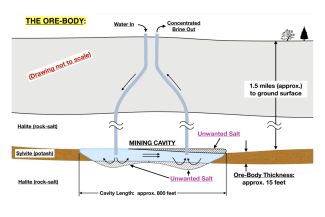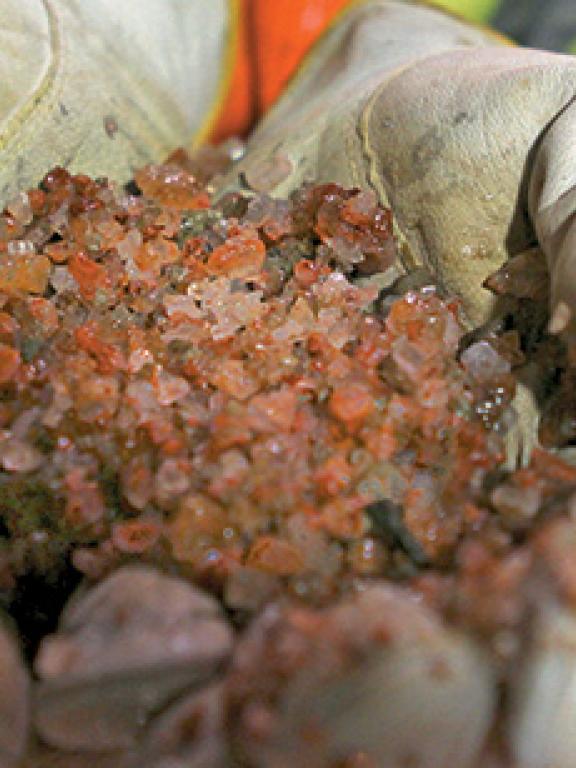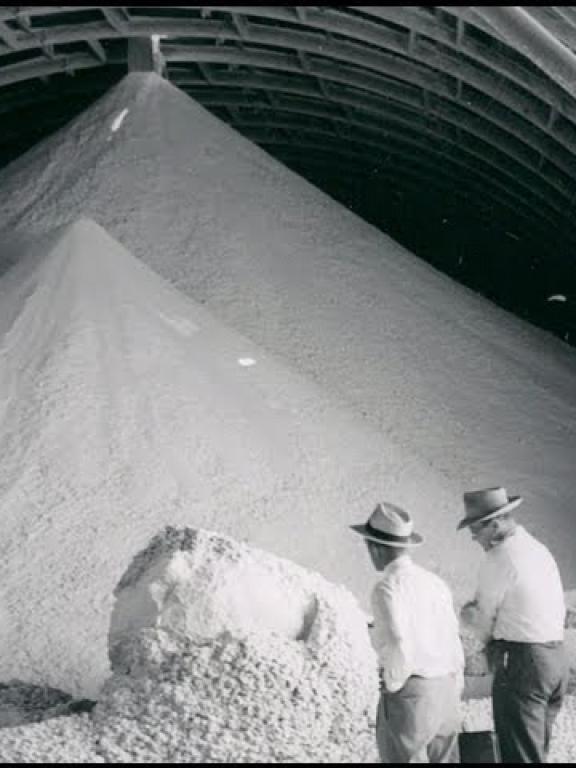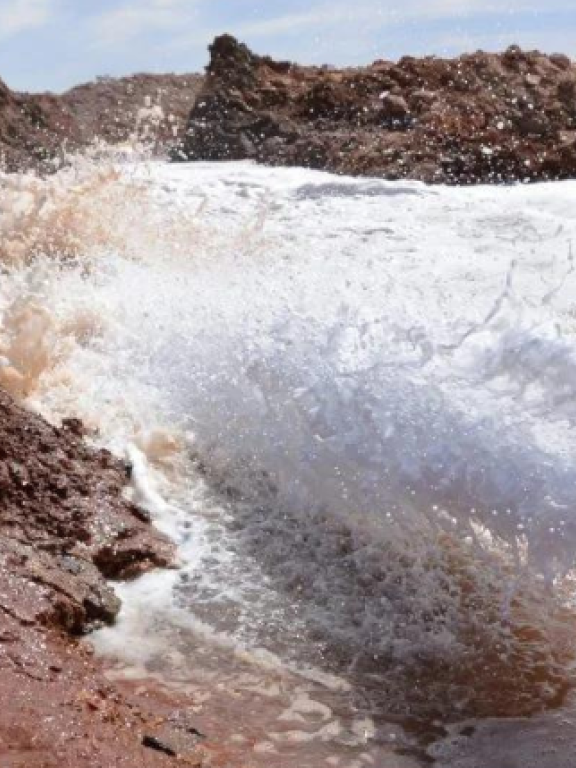Geologists have identified this ore body, a vein in the “Borgen Bed”, as being “…generally one continuous bed 3-10 m (10-30 ft) thick. Average estimate sylvite content….is 55% KCl…”. The remaining 45% is almost all halite (NaCl), a waste-product commonly known to as “rock-salt”. As Michigan Potash officials frequently point out, 55% is exceptionally high purity for potash ore. Although the purity of the deposit does not affect the purity of the mine’s final product, it does increase the overall efficiency of the mine by reducing the amount of halite (salt) that has to be processed (and somehow gotten rid of). The more halite involved, the more water is required, along with more boiling & separating. [ These operations are major contributors to the energy inefficiency of solution-mines. ]
Purity is not, however, the most important factor affecting profitability. A major drawback to solution-mining is lack of control over which substances are being dissolved deep below ground. The “Borgen Bed” which MPSC plans to mine is very thin. (Previous operations encountered a maximum thickness of only 16 feet.) This very thin layer is encased within a massively thick bed of rock-salt. Since water dissolves salt more readily than potash, the process will naturally remove both minerals and send them to the surface. Miners can stop salt from being removed from the “roof” of the cavity by injecting approximately 10,000 gallons of fuel-oil which floats on top of the brine. There is, however, no effective way to control how much salt is taken from the “floor” of the cavity. Significant production of excess salt quickly cancels out the benefits of purity and causes profits to drop accordingly. Eventually there is so much excess salt that the cavity must be abandoned. (Cavity life in previous operations averaged only 2 ½ years.) This makes such thin layers of potash very problematic for solution-mining.
It is safe to assume that the large, experienced companies that mined this deposit until 2013 did not, as MPSC indicates, commit a huge blunder by neglecting to keep their leases up to date. [Mineral leases are, after all, central to everything those companies do. ] It is likely that they retained for themselves the thickest and most profitable portion of the known ore-body. [ It’s worth noting that, in spite of this, profits were not high enough to justify expanding their operations as they’d initially hoped. ]
It appears that MPSC may be grossly understating the amount of salt they will produce. Over time, the company’s stated numbers have been “all over the map”. In 2016 company owner Theodore Pagano gave their “fullproduction targets” as: “Potash: 533,000 T/yr, Salt: 600,000 T/yr”. More recently, in Sept. 2021, they told the Detroit Free Press that they will, “…produce about 650,000 tons of potash per year, and one million tons of food-grade salt per year…”. These figures appear to be dramatically at odds with the former PPG/Kalium/Mosaic mine, which according to Grammer et al achieved a “…maximum potash production of approx. 160,000 metric tons per year and salt production roughly four times the potash level.” (Most recently, the company has been proclaiming that they will, within 3 ½ years, be putting out one-million tons of potash per year. Interestingly, no mention is made of according to Grammer et al achieved a “…maximum potash production of approx. 160,000 metric tons per year and salt production roughly four times the potash level.” (Most recently, the company has been proclaiming that they will, within 3 ½ years, be putting out one-million tons of potash per year. Interestingly, no mention is made of salt.)
Why would this company wish to understate the amount of salt they will produce? It’s highly unlikely that available markets for salt could absorb up to 4,000,000 additional tons of salt per year. This exceeds the total amount of salt produced statewide. We see no way for the company to offload this much excess salt. They’ll be forced to drill a number of additional disposal wells, and the amount of fresh water required to dissolve and flush away this much excess salt would be truly astronomical (and likely unavailable)!

